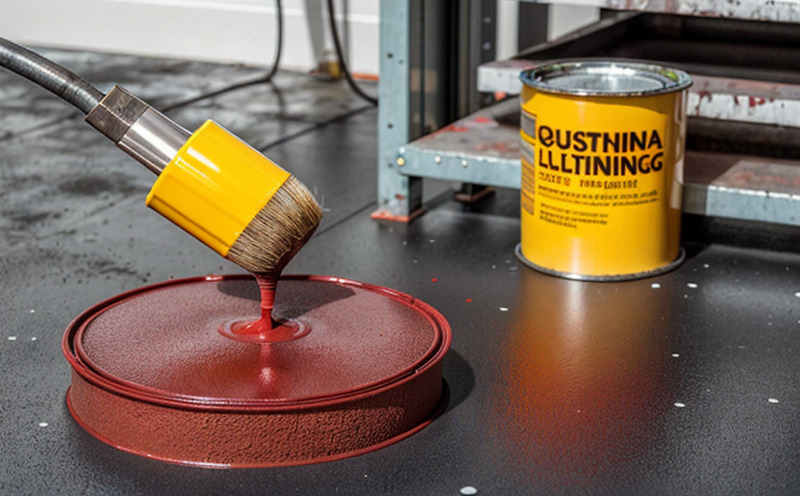ASTM D3359 Adhesion Testing of Coatings by Tape Method
The ASTM D3359 standard specifies a method for evaluating the adhesion strength between coatings and substrates using the tape test. This technique is widely utilized in industrial manufacturing, especially where surface finishes are critical to product performance and durability.
During this process, a coated specimen is subjected to a standardized adhesive tape that is pulled across its surface at a specified rate and angle. The adhesion strength is assessed based on the amount of coating removed by the tape. This test provides valuable insights into the quality of the bond between the coating and the underlying substrate.
The ASTM D3359 method is applicable to various types of coatings, including paints, varnishes, lacquers, and other finishing materials used in industrial manufacturing processes. It ensures that the coatings meet industry standards for adhesion performance, which is crucial for maintaining product integrity under operational conditions.
For this test, it's essential to follow strict specimen preparation procedures to ensure accurate results. The substrate must be thoroughly cleaned before coating application and allowed sufficient time to dry or cure according to manufacturer specifications. After the coating has been applied, the specimens are cured as per standard procedures.
The tape used for testing should adhere firmly but not distort the surface of the coated specimen. The speed at which the tape is pulled across the specimen can affect the outcome; therefore, it must be consistent with the prescribed rate. Proper calibration and maintenance of the tape pulling device are also necessary to ensure reliable data.
Upon completion of the test, the amount of coating removed by the tape is measured using calibrated tools. The results are typically reported as the percentage of coating removed or in grams per square meter (g/m²). These values provide a quantitative measure of adhesion strength that can be compared against industry benchmarks and specifications.
The ASTM D3359 method has been instrumental in quality control for many industries, including automotive, aerospace, construction, and consumer goods. By ensuring that coatings adhere strongly to substrates, it helps prevent issues such as chipping, peeling, or flaking which could lead to product failure or degradation.
Quality managers and compliance officers rely on the results of ASTM D3359 tests to verify that products meet regulatory requirements and customer expectations. R&D engineers use this data to optimize coating formulations for better adhesion properties. Procurement teams benefit from knowing that suppliers adhere to strict testing protocols, ensuring consistent quality across batches.
The tape method is particularly useful in early-stage development when rapid iteration cycles are necessary. Engineers can quickly assess changes in formulation or application technique without extensive downtime. Its simplicity makes it a popular choice for quick checks during production runs as well.
Industry Applications
The ASTM D3359 tape test finds applications across various sectors, particularly those involving protective coatings and surface finishes. Automotive manufacturers frequently use this method to ensure that paints used in bodywork adhere robustly against environmental stresses like humidity, temperature fluctuations, and mechanical impacts.
In aerospace manufacturing, where lightweight yet durable materials are essential for reducing fuel consumption and enhancing safety, ASTM D3359 helps verify the adhesion of protective coatings on aircraft components. This ensures they remain intact during takeoff, landing, and various operational conditions.
The construction industry relies heavily on robust surface finishes to protect concrete structures from weathering and corrosion. By employing ASTM D3359 tests, builders can ensure that sealants and paints applied to these surfaces adhere effectively, thereby extending the lifespan of infrastructure projects.
Consumer goods manufacturers also utilize this testing method to guarantee that packaging materials remain intact throughout distribution channels and end-user handling. It helps maintain product integrity and consumer satisfaction while reducing waste associated with premature failure or damage during transit.
Customer Impact and Satisfaction
By leveraging the ASTM D3359 tape test, customers can significantly enhance their reputation for delivering high-quality products that meet stringent industry standards. This testing ensures consistent performance across batches of manufactured goods, contributing to long-term customer satisfaction.
Quality managers benefit from having reliable data points regarding adhesion strength, enabling them to make informed decisions about process improvements and material selections. Compliance officers can use these results to demonstrate adherence to relevant regulations, further bolstering trust with regulatory bodies and clients alike.
R&D engineers gain valuable insights into how different factors influence coating performance, allowing for continuous improvement in product development cycles. Procurement teams can rely on supplier certifications based on ASTM D3359 tests, ensuring transparency and accountability throughout the supply chain.
The widespread adoption of this testing method within industries underscores its importance in maintaining reliability and safety standards. Companies that invest in robust quality assurance programs incorporating ASTM D3359 contribute positively to overall market confidence and trustworthiness.
Environmental and Sustainability Contributions
The ASTM D3359 tape test plays a crucial role in promoting sustainable practices within industrial manufacturing. By ensuring that coatings adhere effectively, it reduces waste by minimizing instances of premature failure or damage due to substandard bonds between the coating and substrate.
This leads to longer-lasting products and fewer replacements, ultimately reducing resource consumption and environmental impact associated with frequent rework or disposal. Additionally, consistent adherence performance contributes to enhanced product durability, which aligns with broader sustainability goals related to longevity and efficiency.
Manufacturers who commit to rigorous testing protocols like ASTM D3359 demonstrate their commitment to responsible manufacturing practices. This not only enhances corporate social responsibility (CSR) initiatives but also attracts environmentally conscious consumers and stakeholders.





